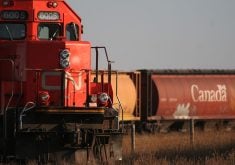A species-at-risk recovery plan for southwestern Saskatchewan that was 10 years in the making is now available for public comment.
Environment Canada is accepting comments on the action plan for nine federally listed species at risk in the Milk River basin area known as South of the Divide.
These include the black-footed ferret, burrowing owl, eastern yellow-bellied racer, greater sage-grouse, prairie loggerhead shrike, mormon metalmark, mountain plover, Sprague’s pipit and swift fox.
Management considerations for four other species — black-tailed prairie dog, long-billed curlew, McCown’s longspur and northern leopard frog — are also included in the plan because they are of special concern.
Read Also

Volatile temperatures expected for this winter
DTN is forecasting a lot of temperature variability in the Canadian Prairies this winter. Precipitation should be close to average.
Much of the 14,000 sq. kilometre region is native prairie ranched by private landowners and provincial and federal crown leaseholders.
Tom Harrison, executive director of the South of the Divide Conservation Action Program, said governments consulted stakeholders four years ago when a draft plan was completed, and they helped update it.
The contents of the recovery plan aren’t a surprise for ranchers and others involved with SODCAP, which is designed to protect habitat while ensuring economic sustainability, but Harrison said others might have questions.
“For example, they identify about a million hectares of critical habitat, and so what does that mean for companies that want to develop down in that area or SaskTel that wants to run lines underground, or RMs that want to develop gravel pits on critical habitat,” he said.
“There’s going to be those sort of questions.”
SODCAP is most interested in habitat management and conservation and the communication and engagement of stakeholders. Regulation and policy, also identified in the plan, must also be looked at, Harrison said.
“Hopefully, it’s adaptive and they’re flexible enough to change as time moves on,” he said.
The comment period is open until July 23. Officials will then review the comments, and the plan could be changed.
Harrison said SODCAP has already been working on 30 recovery measures identified in the draft plan and expects to “just keep on rolling.”
SODCAP and the Saskatchewan Stock Growers Association have federal money to deliver programs aimed at habitat protection and continuous stewardship.
The action plan can be found on the Species At Risk Public Registry at www.registrelep-sararegistry.gc.ca.















